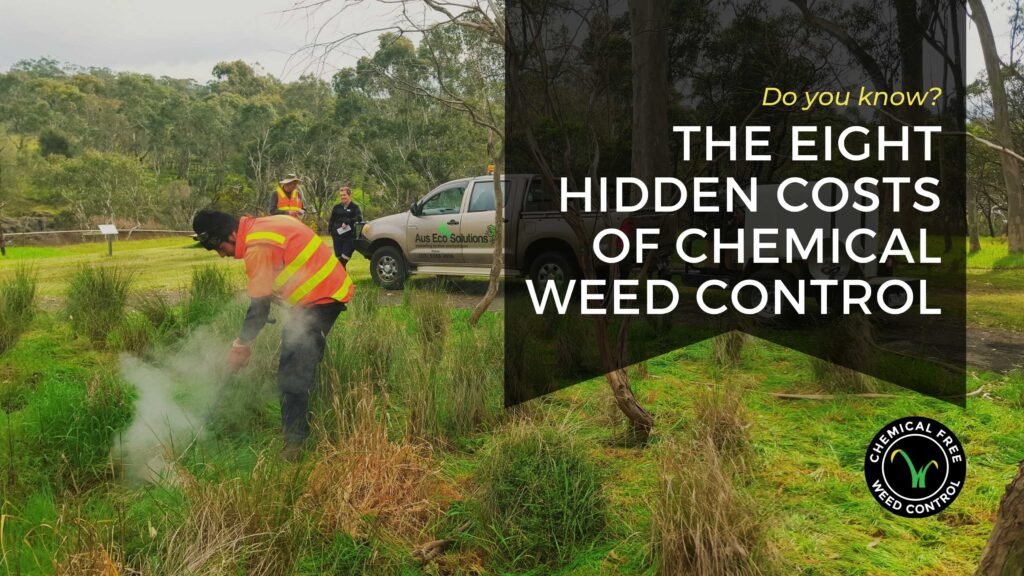Chemical weed killing may seem cost-effective in the short term, but we’ve identified the following 8 hidden costs that you don’t experience with organic weed control.
1. Herbicide Resistance
Repeated applications of herbicides over many years has resulted in the evolution of many resistant species. This results in increased application rates and mixing of chemicals, which further damages surrounding ecosystems and increases costs. With our saturated steam weeders the weeds become more susceptible to killing and reduces treatment frequency.
2. Employee Exposure
All chemical weed killers are toxins. Repeated employee exposure to known toxins drives up health and safety requirements, certification and record-keeping costs. Thermal technology removes toxicology risks associated with chemical weed control products, particularly for horticultural and conservation workers.
3. Off-target Damage
Chemical weed killers sprayed in even light breezes can result in overspraying and off-target damage to desirable vegetation and horticultural crops. Chemical weed killers often release vapours that can cause sickness in chemically sensitive people. These off-target effects can lead to potential litigation.
4. Tarnished Public Image
There is now widespread public knowledge about the hazard to human health of chemical weed killing. Chemical spraying by organisations will lead to a tarnishing of their public image and undermines their environment, safety, and sustainability commitments.
5. Public Safety
Application of chemical weed killers, according to the label, requires the restriction of access to treated areas for a number of hours. This signage poses significant operational costs. Failure to restrict access can expose the public to ‘probable carcinogens’ and can lead to potential litigation.
6. Storm and Potable Water Contamination
Chemical weed killers translocate easily from paved surfaces, through soil profiles, and can contaminate groundwaters, streams, creeks and estuaries. Removing chemicals from drinking water sources creates enormous expenses.
7. Habitat, Ecosystem & Livestock Threat
Most commonly used weed killers have the potential to contaminate habitats of sensitive populations of endangered species such as frogs, bee’s and butterfly’s which are essential to healthy ecosystems. Chemical weed control that has the potential to contaminate fodder and water sources becomes a threat to livestock.
8. Soil Biology
The most commonly used weed killers are Glyphosate-based. Glyphosate is a patented antibiotic and chelator which has been shown to kill soil microbes and bind nutrients. This creates additional costs in soil remediation and fertilising.
These hidden concerns are important to ponder. Feel free to connect with us to see how you can benefit from transitioning to a Satusteam™ weed control system. Click on the link to take a look at our range of machines: Weedtechnics Satusteam™ machines.

